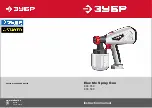
Time Required in seconds to travel a distance of:
17
34
4.0
5.0
6.0
7.0
9.0
8.0
10.0
7.6
6.8
9.7
8.5
14
11
15
14
19
17
23
27
100 Ft.
68 sec.
2.0
3.0
1.0
(Miles per Hour)
Speed in M.P.H.
Speed Chart
136 sec.
34
23
45
68
200 Ft.
51
23
20
26
29
41
34
205 sec.
300 Ft.
102
68
Page 2
Operation & Calibration
The performance of any agricultural chemical depends upon the
proper application of the correct amount.
Be sure that your
equipment has been calibrated before spraying.
The tips supplied as standard with this boom can be used for a
wide variety of spraying applications. The speed and pressure
charts in this manual indicate the rates can be changed
considerably by changing speed and pressure.
Initially begin spraying by opening the handgun. This will enable
the air in the line to be eliminated through the tip, while building
pressure.
The pumping system draws solution from the tank, through the
strainer, and to the pump. The pump forces the solution under
pressure to the handgun or boom nozzles.
Pressure may be decreased by opening the bypass valve to the
tank. When it is closed the highest spraying pressure will be
reached.
• Open the handgun by squeezing the handle lever
• Rotating the adjustable nozzle tip on the handgun will change the
tip from a straight stream to a cone pattern (finer mist). Be sure the
thumb nut on the adjustment nozzle is tight.
• The pump motor's demand switch shuts off the motor when the
handgun, bypass valve and boom lines are fully closed.
• The system remains pressurized, and the pump motor will restart
automatically when the handgun or boom line is opened. If,
however, the bypass line is open, the pump will not shut off
automatically.
• The 5 nozzles are spaced about 20" apart from each other, and
will spray a 100 inch wide swath.
• The proper nozzle height is approx. 17 to 20 inches above the
object being sprayed.
Adjusting Pressure
- When the bypass valve is closed, pressure is at the highest point.
- Opening the valve will decrease pressure.
Testing the Sprayer
It is important to test the sprayer with plain water before
actual spraying is attempted. This will enable you to check the
sprayer for leaks in the plumbing system.
1. Open tank lid and be sure the tank is clean and free of foreign
material. Fill the tank about half full with plain
water.
2. The strainer is located at the bottom of the intake tube, inside
of the tank. Clean periodically.
3. There are valves located on the manifold. One of these valves
is to shut the boom on or off and the other is for pressure
adjustment. (bypass back into the tank) The 3rd line is the
handgun line. That will always be pressurized.
4. You may now start the sprayer.
5. The pressure should now be increased as desired, by closing
the bypass valve.
6. During this testing period be sure to observe the spray pattern
given by the spray nozzles. Each nozzle should overlap the next
nozzle approximately 30%. If there is any pattern distortion, it will
be necessary to remove and clean the affected tips.
CAUTION: Never use a metal object or other sharp item
for cleaning a nozzle tip. It is better to use a nozzle brush
(not wire brush) or compressed air for tip cleaning.
Drain all water out of your sprayer, paying special attention to
the pump, handgun, and valve(s). These items are especially
prone to damage from chemicals and freezing weather.
The sprayer should be winterized before storage by pumping
a solution of RV antifreeze through the entire plumbing
system. This antifreeze solution should remain in the
plumbing system during the winter months. When spring time
comes and you are preparing your sprayer for the spray
season, rinse the entire plumbing system out, clearing the
lines of the antifreeze solution. Proper care and maintenance
will prolong the life of your sprayer.
Winter Storage
Four things must be considered before spraying with the boom:
How much chemical must be mixed in the tank.
1.
Rate of spray (gallons per acre to be sprayed)
2.
What pressure (p.s.i.) will be used.
3.
Speed traveled (mph) while spraying.
4.
- Refer to the chemical label to determine your chemical mixture.
- See the tip chart to determine the pressure to be used. The chart will also show the speed used when spraying.
- Start the pump and open the valve(s) to the boom nozzles.
- Check the spray pattern. Usually you can see the coverage better on a solid concrete surface, such as a driveway.
- The nozzles should be approx. 17"-19" above the objects being sprayed.
Using the Boom Nozzles
After Spraying
After use, fill the sprayer tank part way with water. Start the
sprayer, and allow the clear water to be pumped through the
plumbing system and out through the spray nozzles.
Refill the tank about half full with plain water and use FIMCO
Tank Neutralizer and Cleaner, and repeat cleaning instructions
above.
Flush the entire sprayer with the neutralizing/cleaning agent,
then flush out one more time with plain water. Follow the
chemical manufacturer's disposal instructions of all wash or
rinsing water.
For the boom, (if applicable) remove the tips and screens from
the nozzle assemblies. Wash these items out thoroughly. Blow
the orifice clean and dry. If the orifice remains clogged, clean it
with a fine bristle (NOT WIRE) brush, or with a toothpick. Do
not damage the orifice. Water rinse and dry the tips before
storing.
WARNING: Some chemicals will damage the pump valves
if allowed to soak untreated for a length of time! ALWAYS
flush the pump as instructed after each use.























